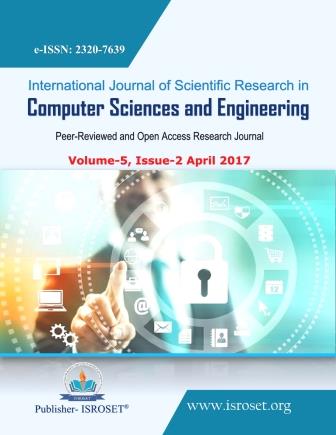Scrutiny to Effectiveness of Various Software Process Model
Keywords:
Software process models, Waterfall model, Iteration model, V-shaped model, spiral model, agile model, requirement, planning, design and implementationAbstract
A software process model is summarized representation of a process. There are different software process models. It is very difficult to choose a model for the project and the developer choose the best effective model for the software. Developer phase many problem to develop a software, they confuse between different software model, which model is best to develop a software. This research describe five generic software process model and represent the effectiveness of different software process models according to the defects and features of each models. Various software models have been analyzed here with different techniques and the five software process models are waterfall, Agile, V-shaped, spiral and Iterative model. Therefore, this research goal is to represent effectiveness of different software process models and estimate best effective software process models according to the defects and features of each model. The main problem are, which model is more effective. How do we suggest one model for development and which method we use to compare all these models? Which is depend some features of a model. Methodology has been used to solve this problem here and the research methodology consists of five different methods combined. A combination of methods is used to provide a wide scope of information and opinions within the research. In this analysis the effectiveness of these models is also explained on the basis of requirement, planning, design and implementation.
References
Aanchal, S. kumar, "Metrics for Software Components in Object Oriented Environments: A Survey", International Journal of Scientific Research in Computer Science and Engineering, Vol.1, Issue.2, pp.25-29, 2013.
Raval, Ratnmala R., and Haresh M. Rathod. “Comparative Study of Various Process Model in Software Development”, International Journal of Computer Applications, Vol.82, Issue.18, 2013.
A. M. Davis, H. Bersoff, E. R. Comer, “A Strategy for Comparing Alternative Software Development Life Cycle Models”, Journal IEEE Transactions on Software Engineering, Vol.14, Issue.10, 1988.
Asmita, Kamlesh, Usha, “Review on Comparative Study of Software Process Model”, India International Journal of Science, Technology & Management, Vol.4, Issue.1, 2015.
Adel Alshamrani, Abdullah Bahattab, “A Comparison Between Three SDLC Models Waterfall Model, Spiral Model, and Incremental/Iterative Model”, IJCSI International Journal of Computer Science Issues, Vol.12, Issue.1, 2015.
Ms. Shikha maheshwari, Prof.Dinesh Ch. Jain, “A Comparative Analysis of Different types of Models in Software Development Life Cycle”, Int. Journal of Advanced Research in Computer Science and Software Engineering, Vol.2, Issue.5, 2012.
Mr. Preyash Dholakia, Mr. Dishek Mankad, “The Comparative Research on Various Software Development Process Model”, International Journal of Scientific and Research Publications, Vol.3, Issue.3, 2013.
Ragunath PK, Velmourougan S, Davachelvan P, Kayalvizhi S, Ravimohan R., “Evolving a new model (SDLC Model-2010) for software development life cycle (SDLC)”, International Journal of Computer Science and Network Security, Vol.10, Issue.1, pp.112-9, 2010.
Youssef Bassil, “A Simulation Model for the Waterfall Software Development Life Cycle”, International Journal of Engineering & Technology Vol. 2, Issue. 5, 2012.
Nabil Mohammed Ali Munassar , A. Govardhan,, “A Comparison Between Five Models Of Software Engineering”, International Journal of Computer Science, Vol.7, Issue.5, 2010.
Gurleen Singh, Tamanna, “An Agile Methodology Based Model for Software Development”, International Journal of Advanced Research in Computer Science and Software Engineering, Vol.4, Issue.6, 2014.
P. Madeshia, D. Gupta, "Component Based Software Development", International Journal of Computer Sciences and Engineering, Vol.2, Issue.6, pp.7-8, 2014.
Veerapaneni Esther Jyothi, K. Nageswara Rao, “Effective Implementation of Agile Practices (Ingenious and Organized Theoretical Framework)”, International Journal of Advanced Computer Science and Applications, Vol.2, Issue. 3, 2011.
Nidhi Sharma and Manoj Wadhwa, "eXSRUP: Hybrid Software Development Model Integrating Extreme Programing, Scrum & Rational Unified Process", International Journal of Computer Sciences and Engineering, Vol.3, Issue.5, pp.383-392, 2015.
Hari Krishnan Natarajan, Ram Kumar Somasundaram and Kalpana Lakshmi, “A Comparison between Present and Future Models of Software Engineering”, IJCSI International Journal of Computer Science Issues, Vol.10, Issue.2, 2013. Manzoor
Ahmad Rather, Mr. Vivek Bhatnagar, “A Comparative Study of Software Development Life Cycle Models”, International Journal of Application or Innovation in Engineering & Management (IJAIEM), Vol.4, Issue.10, 2015.
Sonia Thind, Karambir, “A Review on Spiral Model with Symphony .NET”, IJIRST International Journal for Innovative Research in Science & Technology, Vol.1, Issue.11, 2015.
Nidhin Thomas, Atharva Joshi, Rishikesh Misal and Manjula R, "Data Mining Techniques used in Software Engineering: A Survey", International Journal of Computer Sciences and Engineering, Vol.4, Issue.3, pp.28-34, 2016.
Shubham Dwivedi, “Software Development Life Cycle Models-(A Comparative analysis)”, Int. J. of Advanced Research in Computer and Communication Engg., Vol.5, Issue.2, 2016 .
Madhu Dande and Neelima Galla, "Automation Testing Frameworks for SharePoint application", International Journal of Computer Sciences and Engineering, Vol.3, Issue.11, pp.33-38, 2015.
Downloads
Published
How to Cite
Issue
Section
License

This work is licensed under a Creative Commons Attribution 4.0 International License.
Authors contributing to this journal agree to publish their articles under the Creative Commons Attribution 4.0 International License, allowing third parties to share their work (copy, distribute, transmit) and to adapt it, under the condition that the authors are given credit and that in the event of reuse or distribution, the terms of this license are made clear.







